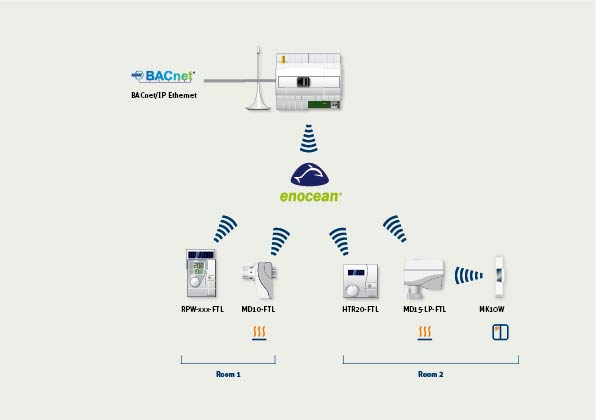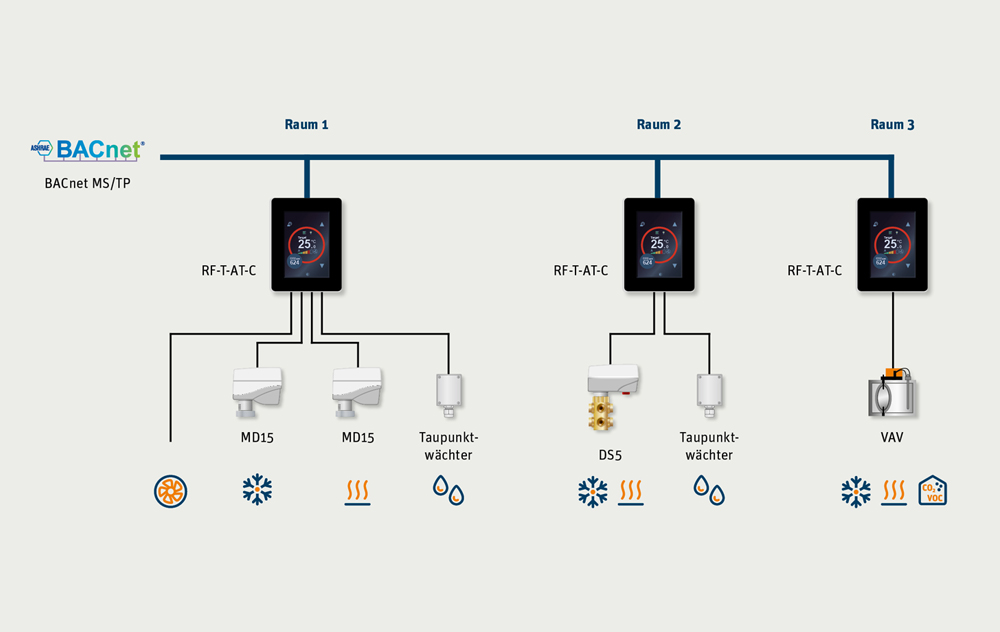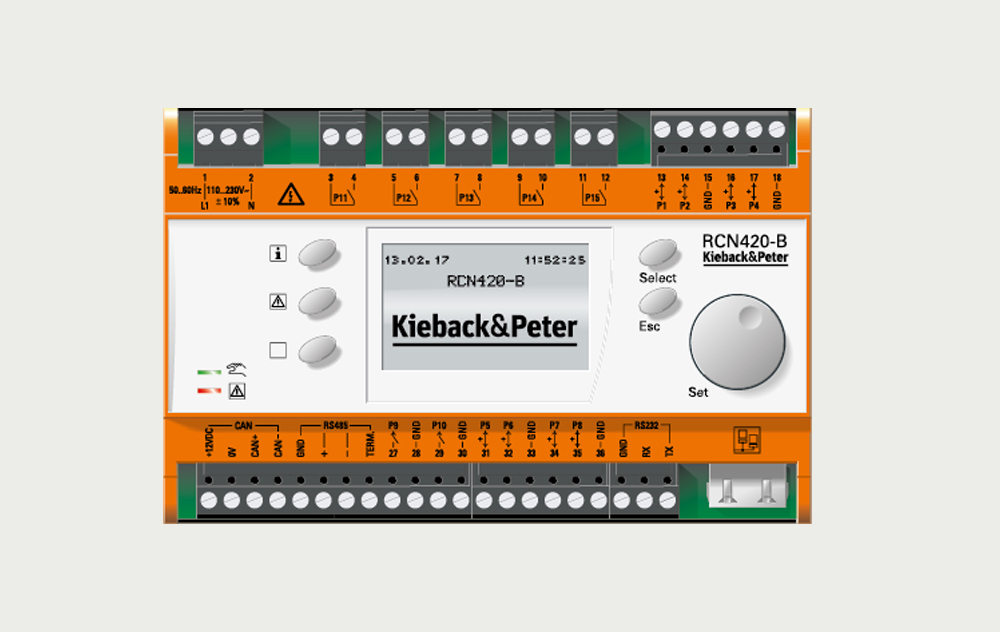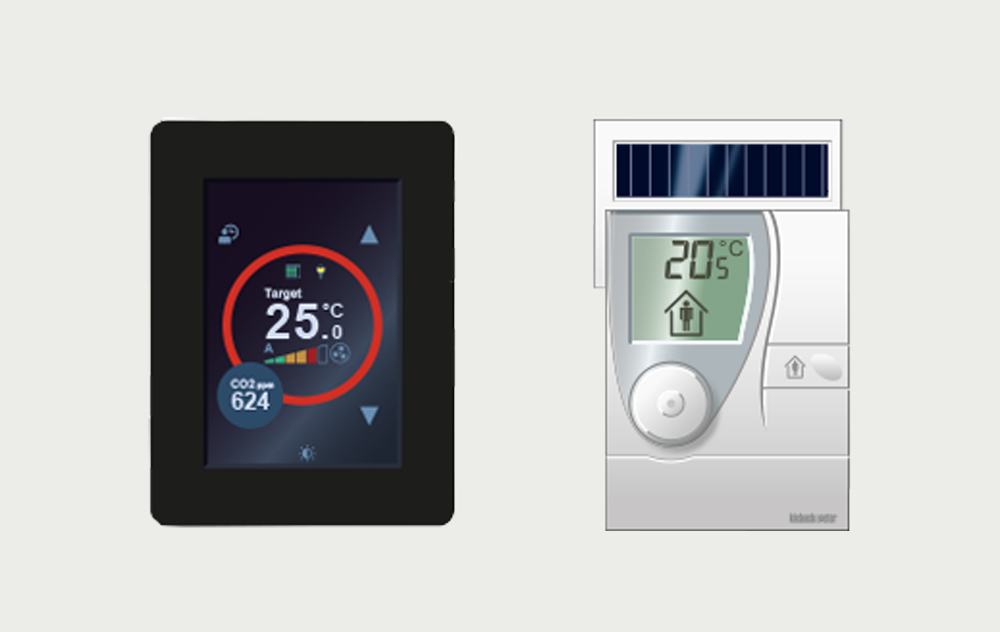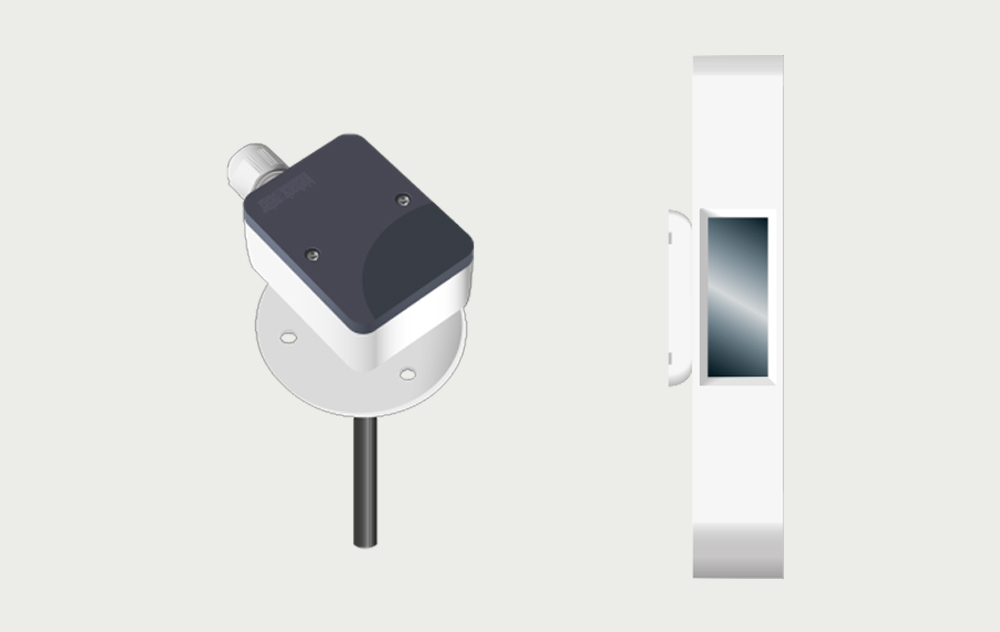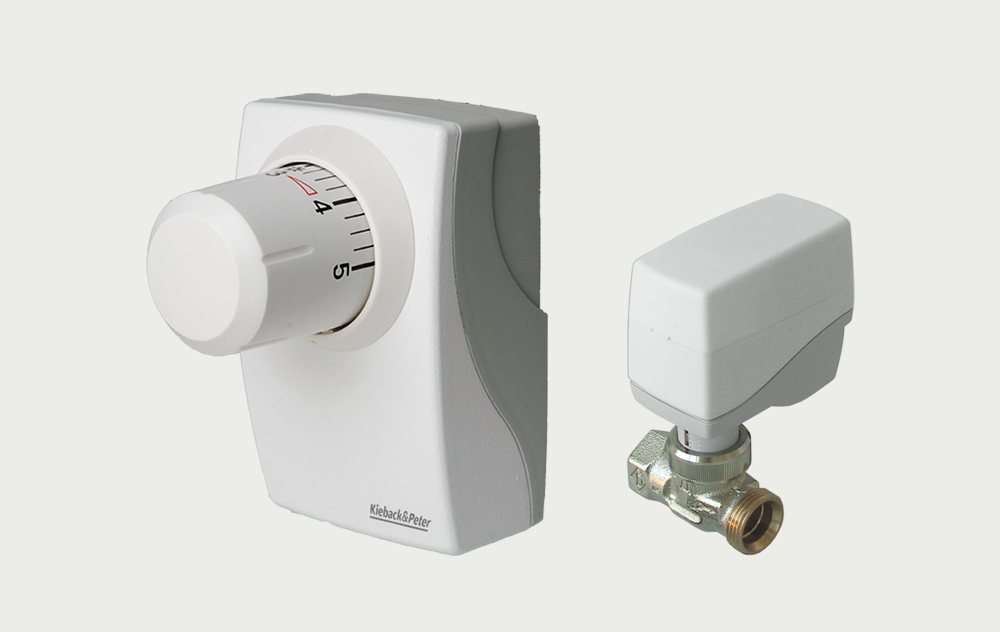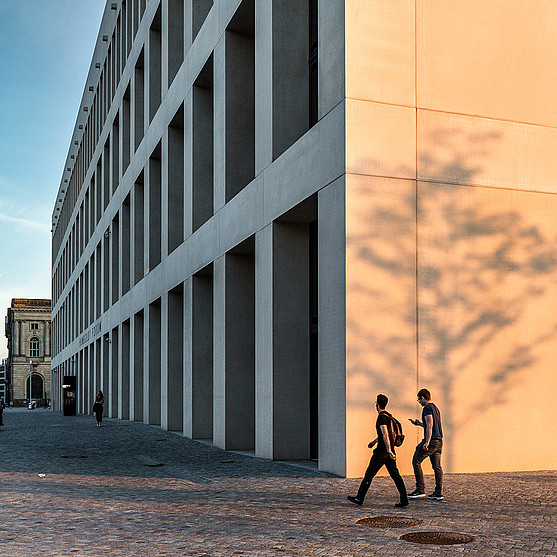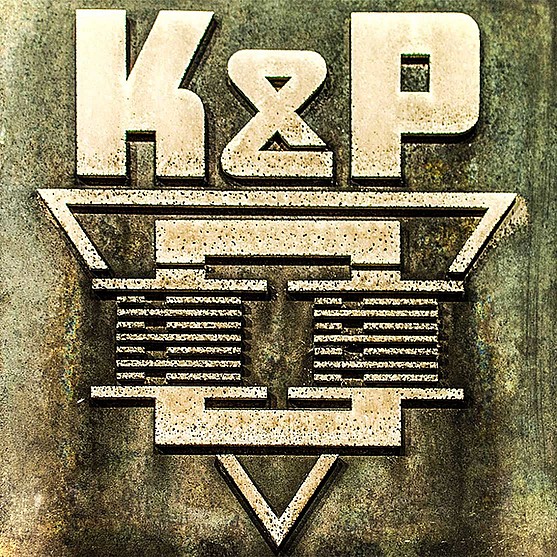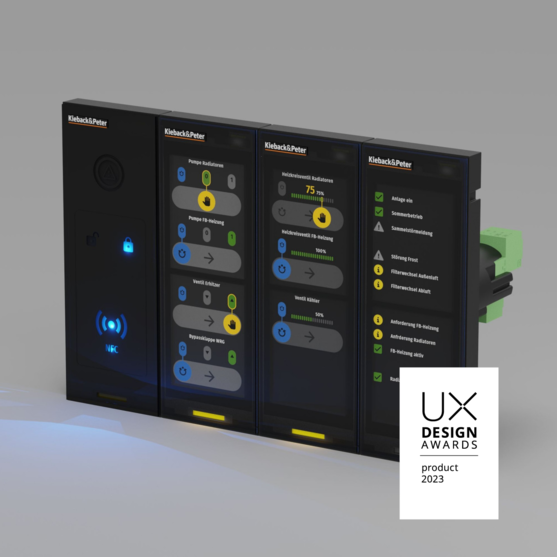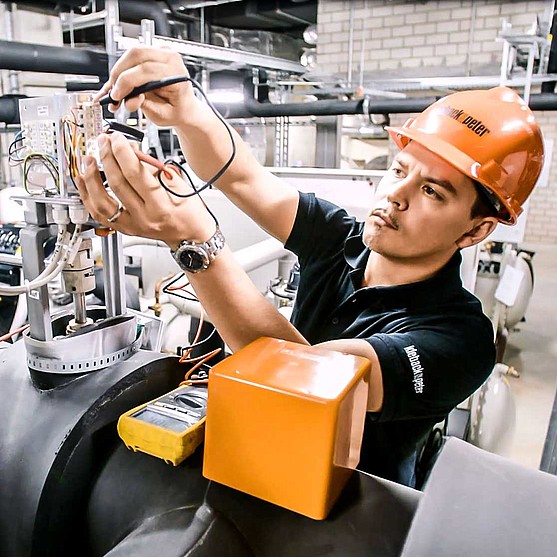Intelligently integrated room automation
Intelligent – comfortable – energy efficient
Integrated room automation is a central component of overall building automation. Smart room solutions ensure the intelligent interaction of heating, ventilation, air conditioning, lighting and shading — cost-saving and according to need. The system components are networked with one another and controlled to ensure that each room maintains a healthy and comfortable environment all year round.
At all times, systems such as heating and cooling work in harmony with each other, accounting for natural resources such as daylight, sunlight and fresh air to regulate the lighting and air conditioning. When a room is not in use, the active functions are shut down automatically to ensure minimum energy consumption. Depending on the type of building, installing highly efficient building and room automation systems can save you up to 50 percent of your primary energy use and significantly reduce your CO2 emissions — all while increasing user comfort.
Functions and applications
Kieback&Peter’s integrated room automation is a cross-technological solution that intelligently networks room automation functions for heating, ventilation, air conditioning, lighting and shading with demand-based control.
![[Translate to Englisch:] Basisfunktionen Raumautomation Kieback &Peter](/fileadmin/_processed_/9/3/csm_raumautomation-Basisfunktionen-feature-kiebackpeter_629754ee6e.jpg)
Basic functions
The four basic functions comprising utilization schedule, occupancy analysis, “scene”-based room usage and separating wall control evaluate operating data and sensor information. The data acquired is then available across all the building services.
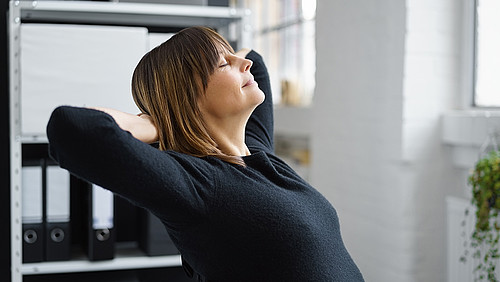
Room climate
Temperature and air quality control provides an internal climate with optimal living or working conditions. Comfortable temperature and optimized air quality are established through time- and demand-based heating, cooling and ventilation control.
![1333877305 [Translate to Englisch:] Beleuchtung – Raumautomation Kieback&Peter](/fileadmin/_processed_/7/0/csm_raumautomation-beleuchtung-feature-kiebackpeter_b296a22b2a.jpg)
Lighting
Demand and usage-based room lighting control provides benefits to the user’s comfort and well-being. It also increases the building’s safety and energy-efficiency while reducing operating costs.
![[Translate to Englisch:] Sonnenschutz – Raumautomation Kieback&Peter](/fileadmin/_processed_/d/d/csm_raumautomation-sonnenschutz-feature-kiebackpeter_e8e2e27f39.jpg)
Sun shading
Automatic sun shading control with precise slat angle adjustment is an important component in achieving energy efficiency class A or B in accordance with DIN ISO 522120-1 and VDI 3813. It lets you optimize the internal room climate all year round.
Class controlled: energy efficiency through room automation
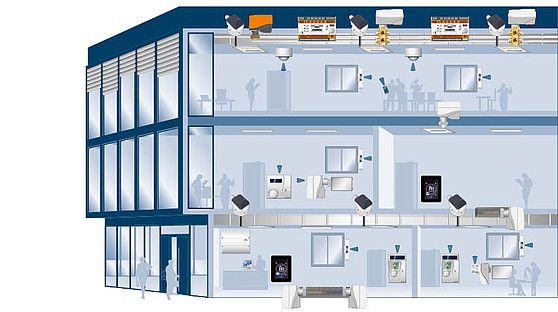
The Kieback&Peter product portfolio offers smart solutions for a broad range of integrated room automation requirements – designed to be flexible and scalable for use in new or existing buildings. With their outstanding performance and reliability, our controllers, operating systems, actuators and sensors are made in Germany of premium quality. They ensure maximum usability and efficiency for operators and users alike.
An overview of our solutions and system components
Four good reasons for our room automation solutions
Demand-based room solutions optimize the building’s energy efficiency and reduce harmful CO2 emissions. On top of saving operating costs, this is a cornerstone for achieving the highest possible energy efficiency class A in accordance with DIN ISO 522120-1 and the requirements of building certification systems such as DGNB, BREEAM, or LEED.
Smart networking of the automation functions always ensures an optimal indoor climate with a comfortable temperature, the best air quality and intelligent lighting control with reduced artificial light. Sun shading control with automatic sunblind slat and shading adjustment provides reliable glare protection alongside a high daylight yield.
If the room use changes or additional services are required, our flexible and scalable systems can be rapidly adapted to new conditions — either in the renovation phase or during ongoing operation. Our wide product portfolio and intuitive operating concept provide custom solutions with optimized user comfort.
Alongside their high energy efficiency, Kieback&Peter solutions feature simple and efficient management that saves valuable time and money — from installation and commissioning to daily use and maintenance. These strengths pay off even when the building is repurposed or for retrofit integration into an existing system.

